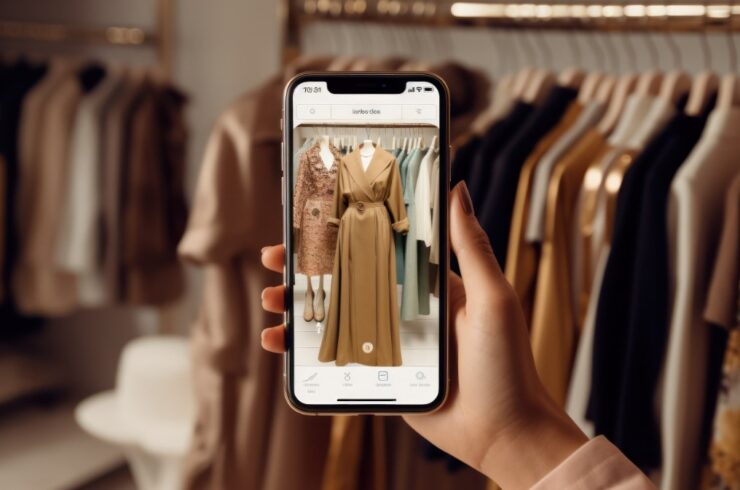Today, the fashion industry is undergoing years of transformation led by ever-changing technologies. Virtual personal stylists can now assist with outfit planning without the need of meeting face-to-face. Such personal stylists use AI technologies, data analysis, and consultations to help people choose outfits. But are they the future of fashion?
The Rise of Virtual Personal Stylists
Fashion trends have called for convenience. And, apparently, virtual personal stylists have emerged in response to this need. With busy lives, many people do not have time or the desire to go to physical stores. Because of that, they opt for the convenience of online shopping. Shoppers often become stuck between multiple choices when picking clothing items online, thus resulting in unnecessary returns.
Fortunately, London personal stylist can help overcome this. The expert can achieve this by giving a customised recommendation to help their shoppers match their body type, colour preference, and the activities they engage in during the day.
Series like Stitch Fix, Thread, and Lookiero have embraced this trend through artificial intelligence styling services. These platforms use features like users’ interests, past purchases, and trends to help them select appropriate outfits. Some even incorporate virtual fitting solutions that enable customers to envision what the clothes would look like before purchasing. This integration of advantage and customisation is making virtual styling more widespread.
How Virtual Personal Stylists Work

Virtual stylists can work algorithmically and AI-based and hire skilled stylists to help clients. Customers first complete a survey indicating their style, budget, and size preferences. The app then customises outfits using this information and input from stylists.
Some services take it a notch higher by offering video consultations. This allows customers to contact an expert and get personal recommendations for their wardrobe in real-time. Some also apply augmented reality (AR) to design a virtual fitting room. This way, you can view various clothing options based on your body.
Pros of Using Virtual Stylists
- Ease of accessibility ─ Clients can get professional styling solutions without leaving the comfort of their homes.
- Automation ─ Unlike generic tips, virtual stylists filter recommendations. They do so according to the user’s preferences, including body size.
- Ethical considerations ─ Some select sustainable options and promote the responsible buying of products with a longer lifespan.
- Saves time ─ Virtual stylists eliminate the need for hours of online shopping or physical searching for clothes.
- Less shopping pressure ─ Consumers tire easily when choosing what to wear. However, a virtual stylist narrows down the possibilities by recommending styles that will suit a client.
- Expert assistance ─ Consumers can now afford professional styling assistance without the hefty price tag of a personal stylist.
- Improved closet organisation ─ Virtual stylists offer customers coherent outfit. They do so by matching clothing items that will fit well with other items the customer might own.
Cons of Using Virtual Personal Stylists

Even though virtual stylists have these advantages, they also have some drawbacks:
- Usually, there is no fitting process in virtual styling. Therefore, clothing measurement may, at times, prove inaccurate.
- The algorithm often is not as insightful in capturing individual style as the human eye of a stylist.
- Some users feel that recommendations are too general. This means true personalisation doesn’t just require deploying machine learning algorithms. It also needs human curation.
Cost-Effectiveness of Virtual Styling
The traditional approach involves an expert charging high prices for consultation. Virtual options are cheaper because many platforms integrate styling advice and product sales. Some services exist as a monthly subscription for a fraction of the price of in-person stylists.
Virtual stylists can act as a safeguard for those who love fashion but are put on the spot. Instead of buying clothes that may be left in the closet, customers are presented with a collection that suits them. This can lead to more informed spending and a more consistent and congruent fashion.
The Role of AI and Machine Learning

Artificial intelligence and machine learning drive virtual styling services. These technologies can sift through loads of information from customer reviews and fashion trends. As used, user-specific data is collected or inferred. Plus, recommendations improve over time to fit each user exclusively.
Some platforms don’t just use algorithms to analyse clothing selections. They also use them to provide coordinating items. Some use mood boards or analyse the colour scheme. This means the final ensemble is consistent. Therefore, by understanding AI algorithms, virtual stylists can provide individualised fashion recommendations.
Sustainability and Ethical Fashion
Virtual styling has several impacts on sustainability, as highlighted below:
- Encouraging mindful shopping and reducing fashion waste.
- Guiding users toward versatile, high-quality pieces rather than trend-driven items.
- Promoting ethical brands and encouraging people to switch to sustainable consumption.
- Encouraging frugal shopping and investing in quality clothing items rather than throwaway trends.
- Educating customers on various materials that clients can use.
The Future of Virtual Personal Stylists

Just a reminder – we expect virtual personal stylists to get even smarter with the help of advancing technology. Technological advancements will not just progress in understanding. They also advance in identifying personal preferences. This, in turn, will help AI provide recommendations. Virtual reality might act as the next step in the evolution of the shopping experience. When that happens, users will visit digital showrooms from home.
We also expect fashion brands to spend more on virtual styling services. This way, brands will improve customer experience. Retailers that adopt these solutions will provide customers with an efficient shopping experience. Thanks to increased popularity, the idea of digital fashion advisors does not seem far-fetched; virtual stylists will become a norm in the industry.
The bottom line is that virtual personal stylists are still new entrants. However, they are already revolutionising the fashion industry through convenience, customisation, and cost-effectiveness. By using AI for suggestions and immediate advice, they can solve fashion problems. Though some difficulties are still present, technology is becoming increasingly beneficial.
Apparel stylists themselves are not obsolete. But virtual services are here and poised to become an ever-larger part of the fashion world. Virtual personal stylists offer an opportunity to meet these increased demands for smarter and more sustainable fashion consumption. For the occasional shopper or fashion-savvy individual, these digital style assistants are not just the new trend. They are also the current and future.

